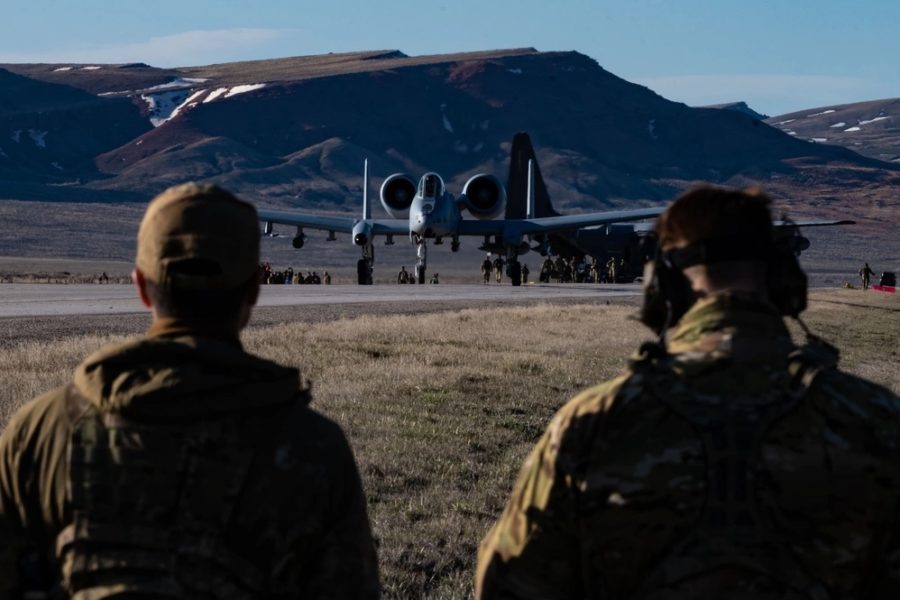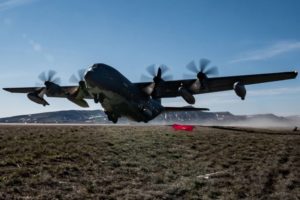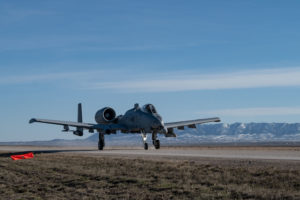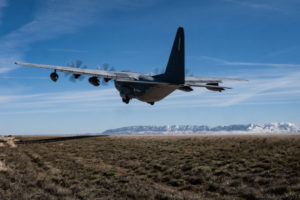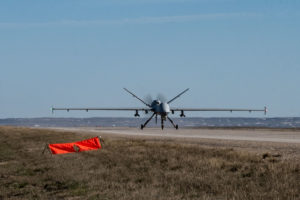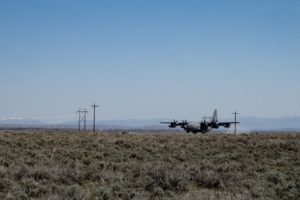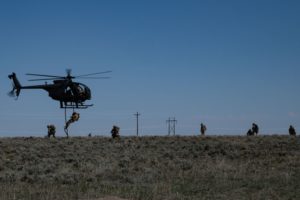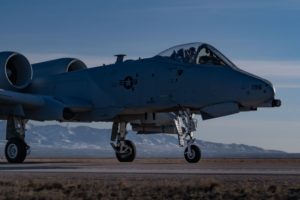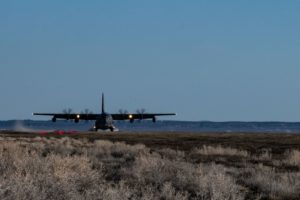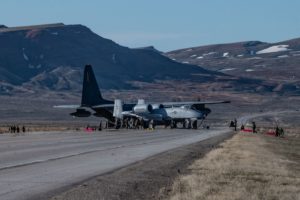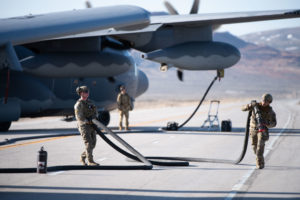As an MC-130J pilot, Air Force Capt. Katheryn Richardson is trained to land on dirt strips in the middle of nowhere, but even she thought it was unusual to land on an asphalt highway in Wyoming.
“We all had a moment where we were looking at the highway and thought about how unnatural it felt to be landing on a highway,” Richardson said in a recent press release about the experience of putting a 132-foot wingspan aircraft down at 140 miles per hour on Highway 287 during a recent training exercise.
Richardson’s unit, the 15th Special Operation Squadron out of Hurlburt Field, Fla., was one of several Air Force units to join the Army’s 160th Special Operation Aviation Regiment in Exercise Agile Chariot, a multiday mission earlier this month where Airmen and Soldiers worked together to secure a stretch of Highways 287 and 789 and launch missions from them in order to rehearse operating from austere environments with minimal supporting infrastructure.
“The MC-130J is the most versatile platform in the Air Force,” 15th SOS commander Lt. Col. Adam Schmidt said in a statement. “This is what we do. And having the capability to land on a highway or a road can absolutely present some unique challenges to our adversaries. We can take the concepts from this exercise and apply them to any road, and in the most austere environments.”
Combat controllers from the Kentucky Air National Guard’s 123rd Special Tactics Squadron parachute jumped from the MC-130J and secured the highway landing zone for the incoming aircraft. The exercise saw Airmen from the 1st Special Operations Wing stand up a forward area refueling point (FARP) to quickly refuel a pair of A-10 Warthogs from the Michigan Air National Guard’s 127th Wing and an MQ-9 Reaper assigned to the Florida-based 919th Special Operations Wing.
Speed was a key objective for both the FARP and Integrated Combat Turnarounds, where Airmen work to recover and relaunch an aircraft as quickly as possible.
Two MH-6M Little Bird helicopters from the Army’s 160th SOAR caught a ride to the exercise aboard the MC-130J. When the Air Force transport landed, the crew unloaded the helicopters, which then took off to perform a simulated search and rescue mission.
This is not the first time Airmen have landed on military aircraft on American highways. A-10 Warthogs from the 127th Wing practiced landing on Michigan state highways in 2021 and 2022 alongside other aircraft such as the U-28A and C-145A. Air Force C-130s have landed on Wyoming highways as far back as 2021. The highway landings are part of an Air Force-wide push towards a concept called Agile Combat Employment, where the branch works disperses aircraft to operate from remote or austere locations, presenting more and harder targets for an adversary.
“Our adversaries … are going to attack our bases with quite an aggressive manner in that it’s a critical vulnerability,” Lt. Gen. Tony D. Bauernfeind, head of Air Force Special Operations Command, said in March. “We have to have these forces that can power project from locations and be able to shoot and scoot.”
Airmen on the ground in Wyoming literally put that rubber to the road.
“An adversary that may be able to deny use of a military base or an airfield, is going to have a nearly impossible time trying to defend every single linear mile of roads,” Air Force Lt. Col. Dave Meyer, the deputy mission commander for Exercise Agile Chariot, said in the press release. “It’s just too much territory for them to cover and that gives us access in places and areas that they can’t possibly defend.”
